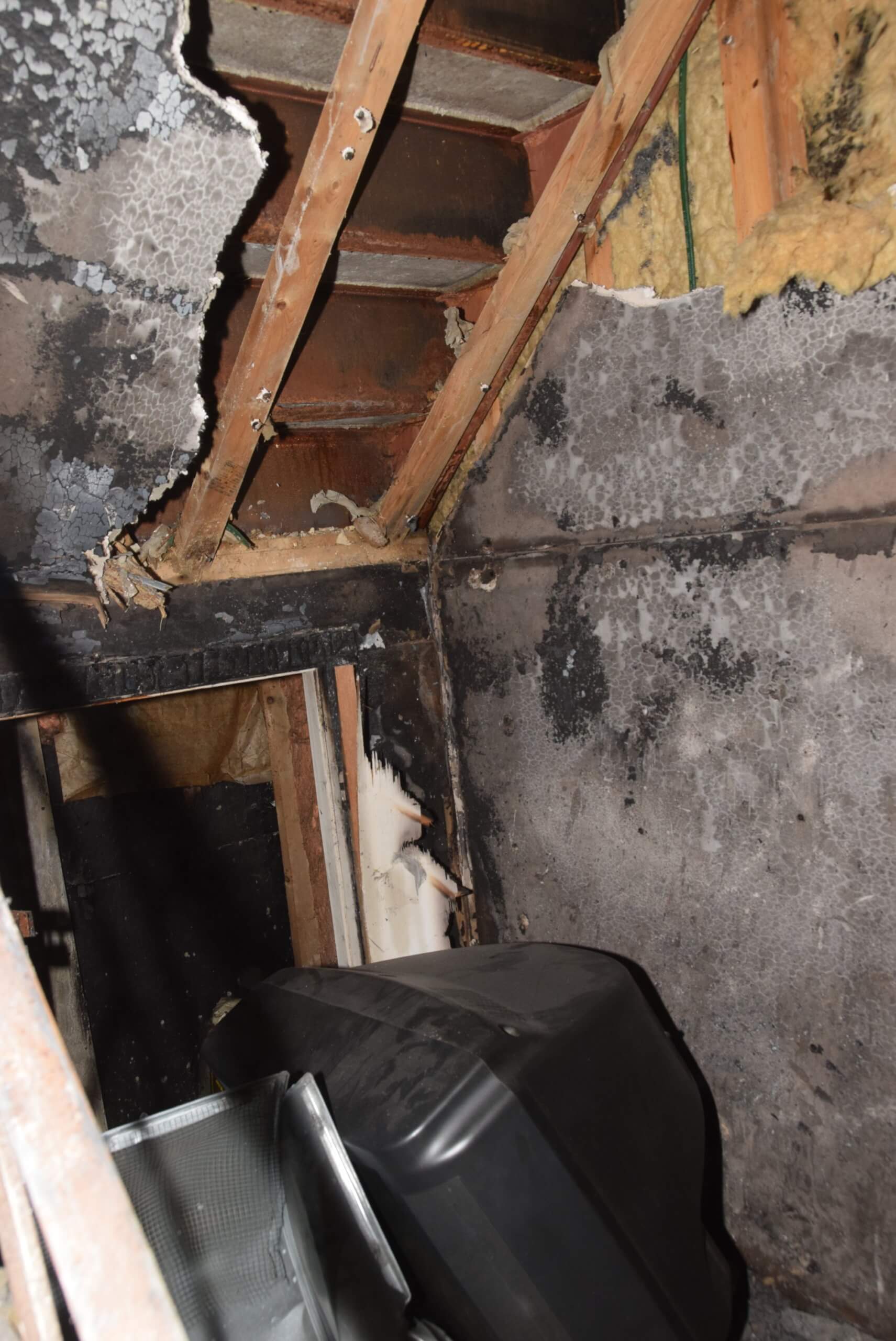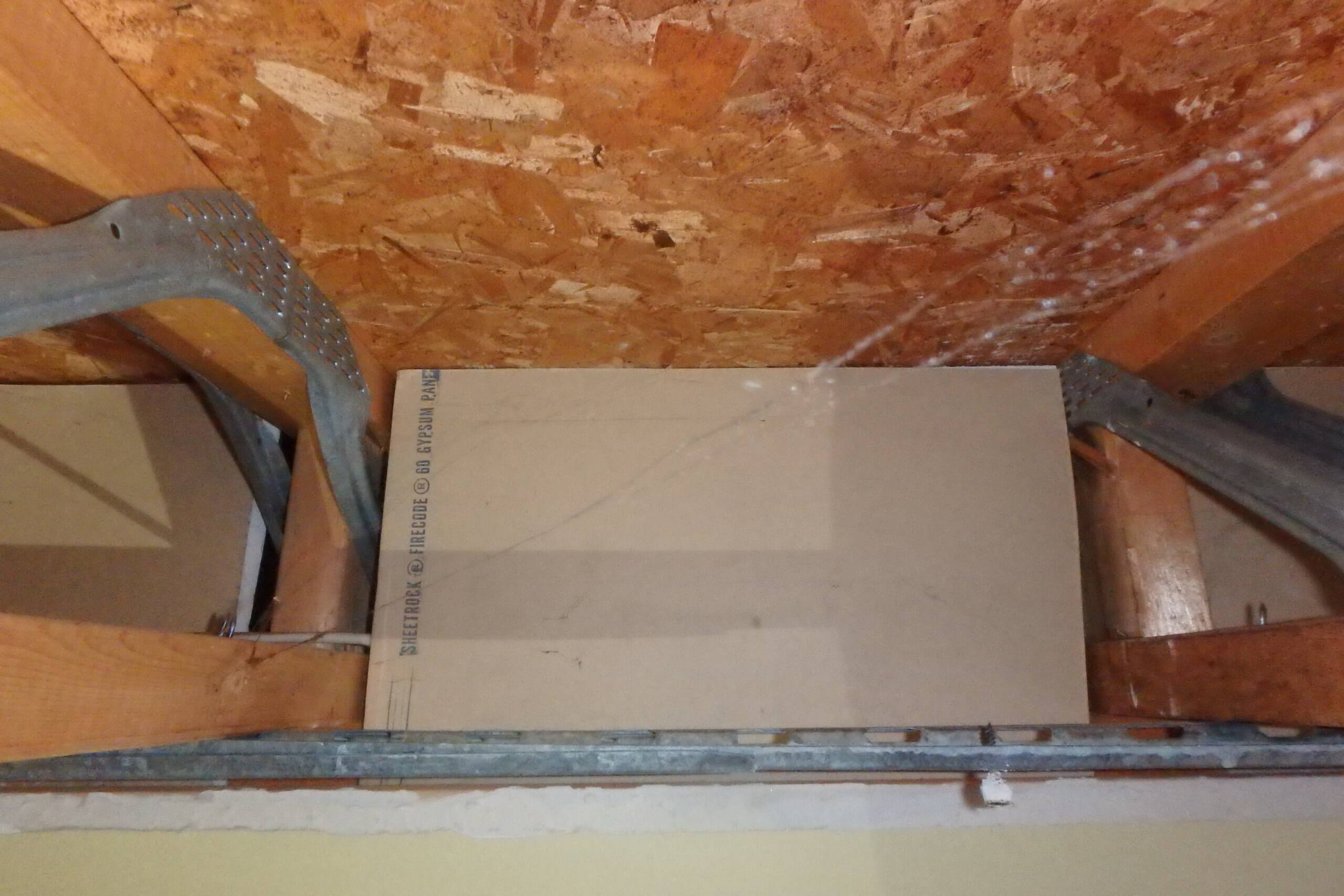Olivier Biron, P.Eng.
When a fire occurs in a building, the insurers involved call a forensic engineer to determine the cause. This helps to determine whether the loss is covered under the insurance policy, but also helps assess the subrogation potential of the loss.
This potential not only depends on the cause of the fire itself, but also on the design of the building’s fire protection system. For example, the ability of the owner of an apartment building to seek recourse against a tenant who caused an accidental fire could be weakened if deficiencies are observed in the firewall separations, thus allowing a faster or more extensive spread of the fire. Verification of the conformity of these separations can be carried out by a civil engineering expert. This article briefly describes the process of determining code compliance.

Figure 1 – The structure has been protected by gypsum boards
This process usually begins with the fire investigation expert. Following an examination of the premises, they may be able to specify the origin and the probable cause of the fire. This information makes it possible to determine whether there is potential for subrogation, which is important for both the owner and for other parties involved. Usually, the party responsible for the loss will seek to mitigate their exposure. For the owner, this is valuable information that could allow a possible defence or speed up the negotiation process.
Once a potential dispute between the parties is established, the civil engineer comes into play. Sometimes these questions arise years after the loss; when that happens, the evidence may no longer be available, and the investigation must be based on the reports of other parties. Data collected by the cause and origin expert can be helpful, but unfortunately, it is often difficult to determine compliance of firewall protections as the investigators are not looking for the same information. If that is the case, it becomes difficult to reach a clear and definitive conclusion unless there are serious and obvious deficiencies.
To allow for all necessary information to be documented, it is crucial that the civil investigation begins shortly after the cause and origin investigation, while the site is still relatively unaltered. Additionally, the collaboration of the expert completing the fire investigation is essential. The civil engineer needs information about the origin of the fire and its propagation, as well as any specific issues related to the loss. This information, combined with the general knowledge of the engineer, allows for greater efficiency on site because the civil engineer can concentrate his efforts in the areas of interest, which generally results in lower investigation costs for the insurer and reduced lead times. These discussions and verification can also make it possible to determine whether the area of interest has been modified or whether it is representative of its condition at the time of the fire. A site examination is then carried out to document the composition of the surfaces of the building.

Figure 2 – The gaps around the gypsum pieces allow flames and smoke to spread easily
The fun begins when the civil engineer returns to their office. It all starts with research to determine the standards applicable at the time of construction of the building or subsequent renovations. But it is not enough to simply use the edition of the Building Code closest to the year of construction of the building. Depending on the dimensions of the building and its use, it may be subject to a different version of the codes and standards depending on municipal regulations (bylaws) and provincial legislation. In the absence of specific data or regulations, the edition of the code preceding the year of construction can be used for reference or to determine the building requirements that were in force at the time of construction. As part of the analysis, it is possible that information may come to light that requires a second visit to confirm additional code requirements. Before any additional site visits, the claims adjuster is informed of the progress of the file and their agreement is requested.
The compliance of the building’s various fire protection systems can then be determined based on the requirements of the Building Code and the applicable bylaws / regulations. Although often minor, nonconformity is present in most buildings, this does not necessarily indicate that these nonconformities resulted in exacerbation of the damage. An engineer will take the time to analyze each of the nonconformities and try to establish a link with the pattern of fire propagation and the timeline of events. Once this analysis has been carried out, they can prepare a report summarizing their observations and conclusions. The type of report will depend on the circumstances, and if it is intended to be used in court or if the expert may need to testify at a trial.
The code compliance analysis of fire protection systems is a weapon (or defence) of choice in the context of a potential subrogation, following a fire in a building. Collaboration between the different specialties and the speed of execution are essential throughout these investigations. The collaboration of all stakeholders makes it possible to obtain the fairest and most accurate portrait of the condition of the premises before the disaster. The use of an experienced multidisciplinary team like CEP Forensic represents an undeniable advantage in the settlement of any claim.
